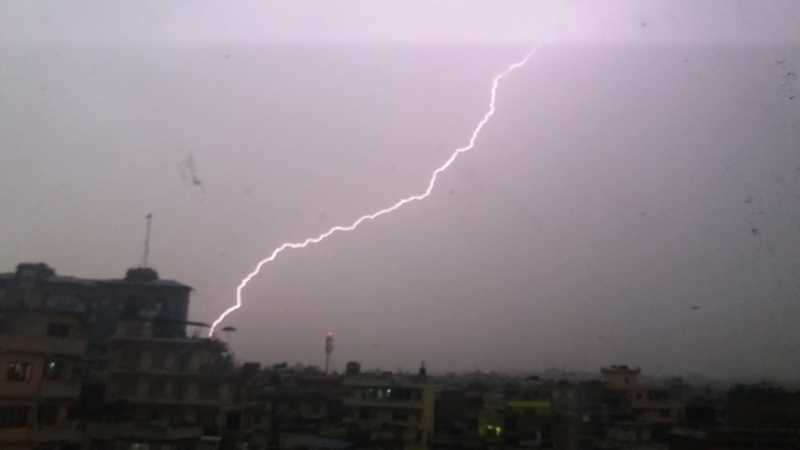Lightning emerges as second deadliest natural calamity
Kathmandu, April 27
Lightning has emerged as one of the deadliest natural disasters in recent times and stands at the second position in terms of the casualties caused.
According to statistics of National Emergency Operation Centre at the Ministry of Home Affairs, as many as 773 persons were killed and 1,695 injured after being struck by lightning over a period of seven years (2068 to 2074 BS).
If the 8,977 deaths and 22,462 injuries caused by the devastating 7.6 magnitude earthquake of April 25, 2015 and its subsequent aftershocks are excluded from the data of seven years, casualties from lightning outdo all other types of natural disasters.
At least 103 died in 2068 BS, 131 in 2069 BS, 111 in 2070 BS, 128 in 2071 BS, 80 in 2072 BS, 115 in 2013 BS and 105 in 2074 BS after being stuck by lightning. Incidents of landslide claimed 730, flood 665, fire 475, cold wave 116, epidemic 95, incessant rain 55, flashflood 43, storm 42, snowstorm 37, boat capsize 35, drowning and high altitude 33 each during the same period.
According to NEOC, number of deaths caused by lightning has been increasing since 2066 BS due to the lack of awareness. An analysis of distribution of human deaths in different districts shows that amongst various disasters, lightning has caused more human deaths in 44 districts.
Although districts of all the development and ecological regions have been affected by lightning, casualty is more predominant in central and eastern hills and eastern Tarai. It mainly occurs before the onset of and immediately after monsoon due to the natural electrical discharge within the atmosphere and the imbalance between positive and negative charges, according to Nepal Disaster Report, 2016. Maximum people were killed by thunderbolt in the months of February, March, April, June, July, August and September.
The MoHA warned that lightning hits the highest point it can find and passes through it to the ground, making trees particularly hazardous places to take shelter during rainfall. The best option to protect oneself from is to stay indoors and avoid using mobile phone when it threatens, the ministry suggested.
The Disaster Victim Rescue and Relief Standards (Sixth Amendment), 2017 requires District Disaster Relief Committee to provide a cash relief of Rs 100,000 to the grieving family of each victim killed in the disasters.
Similarly, it has provided for a provision of Rs 10,000 immediately after disaster for each household that has lost its home or food supplies. According to the standards, the government shall bear the cost incurred for treatment of the injured persons in government hospitals and provide Rs 1,000 as transport allowance.
“Nepal is facing the wrath of natural and human induced disasters with greater frequency and intensity. It is one of the countries most vulnerable to disasters,” says the report.






